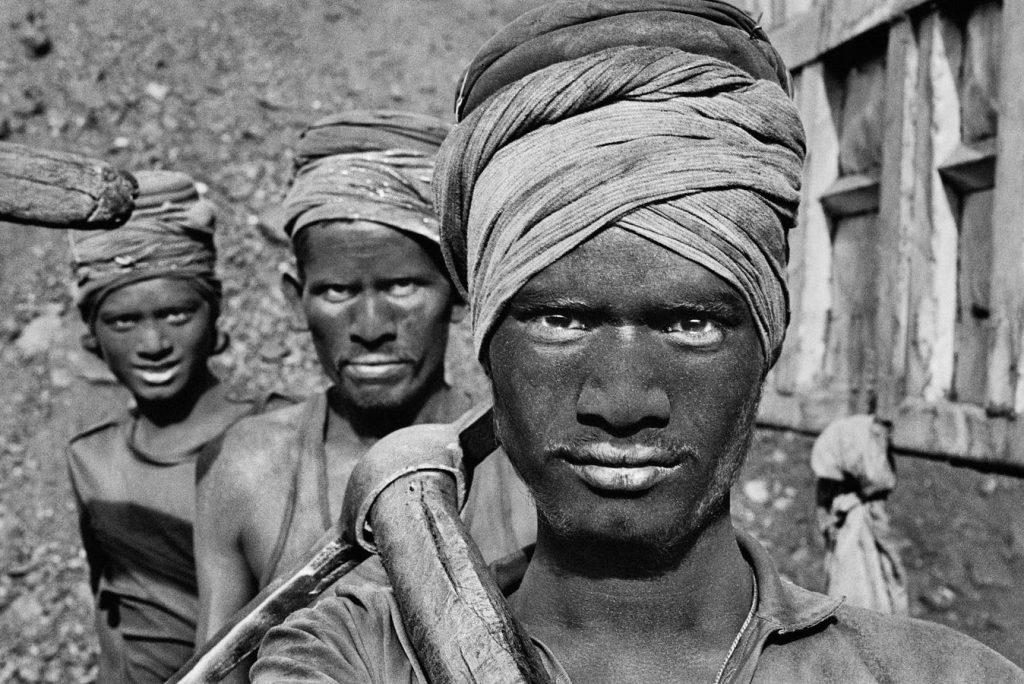Sebastião Salgado, Coal Miners, Dhanbad, Bihar State, India, 1989, Collection MEP, Paris
Photo Sebastião Salgado
Few photographers have altered the way we see the world quite like Sebastião Salgado. For more than 50 years, the Brazilian-born documentary photographer has captured some of the most powerful stories of our time: refugees fleeing conflict, laborers engaged in punishing physical work, Indigenous communities at the edge of modernity and remote landscapes still untouched by industrialization. Always working in black and white, his images are at once epic and intimate, combining raw humanity with a timeless, almost mythic sense of place. Trained as an economist before turning to photography in his late 20s, Salgado approaches his subjects with deep empathy and unwavering patience, often spending years immersed in a single project. Whether photographing famine in Africa, gold miners in Brazil, the Galapagos, polar ice caps or the Amazonian rainforest, he’s not just bearing witness – he’s inviting us to look longer, feel deeper and reconsider our place on the planet. His photographs are visual essays, meditations on the fragility and resilience of life, and calls to action wrapped in stunning compositions. His work is now being celebrated at Les Franciscaines in a survey show on view through June 1, 2025, organized in collaboration with Paris’ Maison Européenne de la Photographie, which holds over 400 of his prints in its collections.
How would you describe your current exhibition at Les Franciscaines?
When we arrived there, we did a tour of the exhibition. And for me, it was like taking a tour of my life. I had the privilege, because it’s a privilege, to have been able to go to all these places. Sometimes people say to me, “Sebastião, you’re an artist.” I say, “No, I’m a photographer.” Because it’s only photographers who have the right to doubt. When we go to all these regions of the world, facing all the problems you can imagine, all the challenges, we ask ourselves questions. We ask ourselves ethical questions. We ask ourselves questions about legitimacy. We ask ourselves questions about security. And it’s up to us to find the solution, and to find it on our own. How many times in my life have I put my camera aside and sat down to cry? Because it was so dramatic, and I was alone. That’s the power of the photographer, to be able to go there. Because a journalist can get information from one side or another, create a system that will give the right information, but he doesn’t need to be there. A photographer, if he isn’t there, he doesn’t have the image. He has to go there. We expose ourselves a lot. So it’s an enormous privilege. And by walking through the exhibition, looking a bit, it’s amazing how I’ve traveled back in time through my life.
Sebastião Salgado, Chinstrap Penguins on an Iceberg, South Sandwich Islands, 2009, Collection MEP, Paris. Donation of Sebastião Salgado and Lélia Wanick Salgado in 2018
Photo Sebastião Salgado
How did the experience of documenting the oil fires in Kuwait affect you physically and emotionally?
It was the biggest pollution this planet has ever had – 600 oil wells burning at the same time. There were days and days when we didn’t have any sun. It was night 24 hours a day. And it was so stunning because at some point, there was a gust of wind that opened up the clouds and a ray of sunshine entered. It was like working in a theater the size of the planet. The gases exploded above us, and the fear of being burned alive was there. The sound of the oil wells, the pressure coming out of the ground, was like working behind a jet turbine. So today, I’m half deaf, but the important thing is that the photos are there.
What was your emotional response to witnessing the genocide in Rwanda?
I arrived in a refugee camp and saw 15,000, 20,000 people die every day. They could no longer be buried one by one. They had to use bulldozers to make huge holes and shovel in 20 or 30 corpses at a time. It was so brutal I became sick – really sick. I was ashamed of being a photographer. I was ashamed of being part of the human species because until then, I had photographed only one species: ours.
How did you and your wife Lélia begin your vast reforestation project, Instituto Terra, and what did it do for you personally?
We were not ecologists. We simply wanted to plant a forest. But as we planted, we saw life return: leaves, flowers, insects, birds, mammals. And little by little, my hope was reborn – not based on humans, but on all the other species on the planet. At some point, we discovered that we were ecologists because everything we do is pure ecology. We planted the entire space. It’s a magnificent forest. Possibly, in the next 10 years – I hope I’ll still be alive – we will have planted at least 10 million more trees. It’s the largest ecological project in Brazil today.
Portrait of Sebastião Salgado
Photo Drew Forsyth
How did this rebirth influence your work on “Genesis” and your view of the planet?
We conceived a series of trips over eight years to photograph the pristine parts of the planet – the parts not yet destroyed. We didn’t know it would be called “Genesis” at first, but those journeys became “Genesis”. And I discovered that the greatest journeys I’ve ever made are within myself. The planet has colossal wisdom. I’m not a believer, but I believe in evolution. It’s a shame we only live 80 years or 90 years maximum. If we could live 1,000 years, we would be able to understand our planet 1,000 times better – and live in another way.

